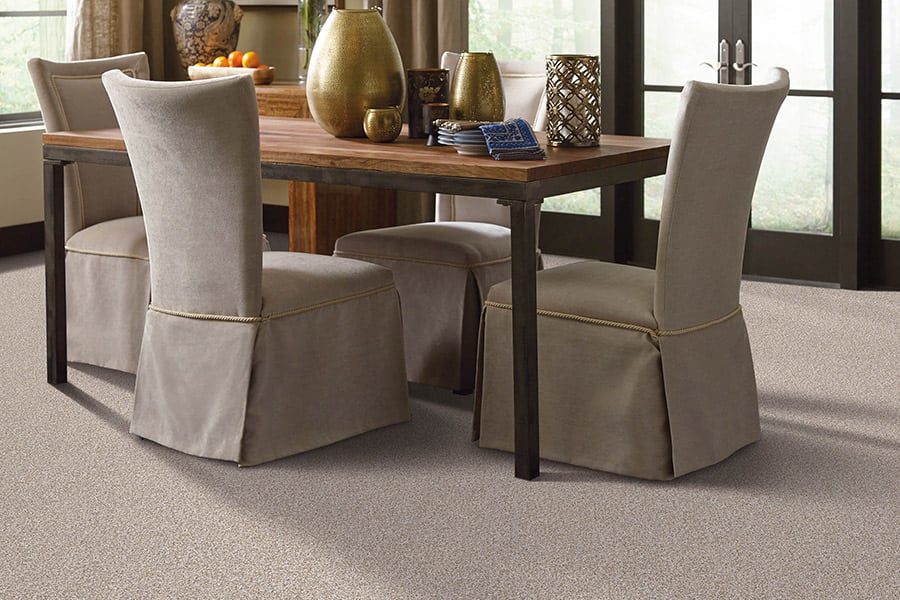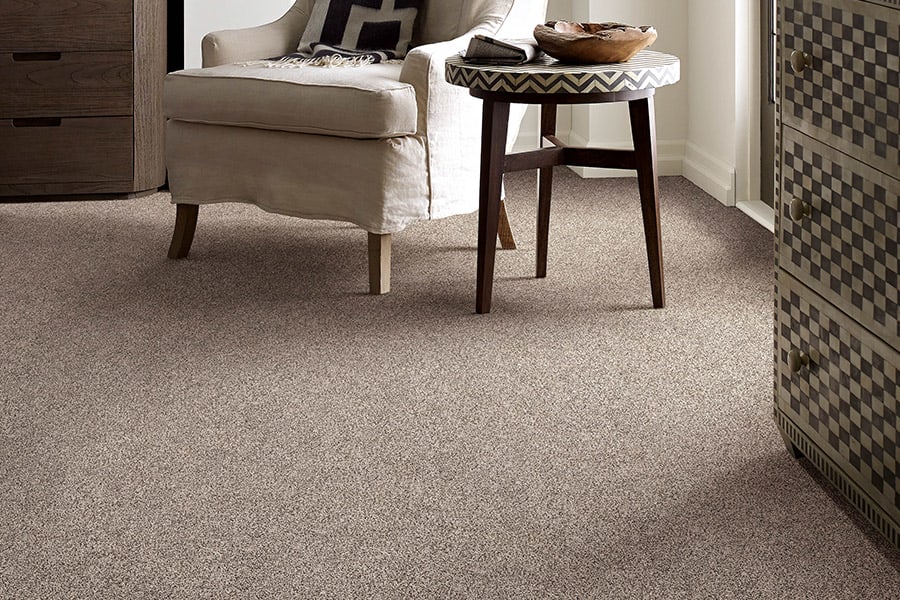Finding the right carpet for your home
The best carpet installation is one that’s closely aligned with your lifestyle, needs, and wants. When they match up, the rug will look great and perform well for years to come, whether you need extra durability and stain resistance for your large family with pets or the right pile height for easier mobility in the home office. Consider Carpet Mart and More Flooring Center your full-service carpet store in Aurora, CO. As always, we’re happy to answer your questions.
Basic carpet terms to know
You don’t need to be an expert, but you should know the basics, especially since many of them are related. Pile indicates the height of the carpet fibers or yarns, and they can be high or low. Examples of high include the shag and frieze styles, while the Berber, a looped style, has short, tightly woven ones. The iconic Saxony is a medium height, but it has two different textures: plush and velvety or patterned.
Texture means the style and whether the fibers are looped, twisted, or cut. That also determines style and durability. For example, Berber is a style where the fibers are looped. It is easier to clean and a little more durable than others since there are no long fibers to get caught in the vacuum cleaner. This is the type of carpet seen in offices.
Density and twist are good indicators of quality. Density means how closely the fibers are tufted together, and the label should include a value number of 3,000 to 5,000. Twist means how many times a fiber is turned per one-inch length. That is signified on the label as "Twist Number" from one to five. (Frieze can go as high as eight.). The higher the number, the better the quality, but not all rugs, such as the Berber, have this rating.
Fibers are the yarn that comprises the rug. They can be natural, like wool, or synthetic, like nylon, polyester, olefin, and triexta. Whether you want natural or synthetic will depend upon how much you value the respective characteristics.
Texture means the style and whether the fibers are looped, twisted, or cut. That also determines style and durability. For example, Berber is a style where the fibers are looped. It is easier to clean and a little more durable than others since there are no long fibers to get caught in the vacuum cleaner. This is the type of carpet seen in offices.
Density and twist are good indicators of quality. Density means how closely the fibers are tufted together, and the label should include a value number of 3,000 to 5,000. Twist means how many times a fiber is turned per one-inch length. That is signified on the label as "Twist Number" from one to five. (Frieze can go as high as eight.). The higher the number, the better the quality, but not all rugs, such as the Berber, have this rating.
Fibers are the yarn that comprises the rug. They can be natural, like wool, or synthetic, like nylon, polyester, olefin, and triexta. Whether you want natural or synthetic will depend upon how much you value the respective characteristics.
Request a free estimate
Carpet construction, style, and texture
These three words are all related. A straight loop, such as the Berber, is entirely uncut. The shag and frieze are often used interchangeably, but that’s not correct. The shag has long, straight, loose fibers, while frieze fibers are slightly shorter but twisted so tightly they curl. A cut and loop construction creates and embeds patterns, such as geometrics, hexagonal, and chevron. Plush is a texture where the yarns are packed closely together, making it soft and appropriate for formal settings. That’s a lot to take in. Our experts have decades of experience and help clarify your carpet needs, either at our mobile or brick and mortar showroom in Aurora, Colorado. We will also give you a free quote on your carpet flooring needs. We service customers in Aurora, CO, Denver, CO, Highlands Ranch, CO, Littleton, CO, Centennial, CO, Englewood, CO, and Greenwood Village, CO.












